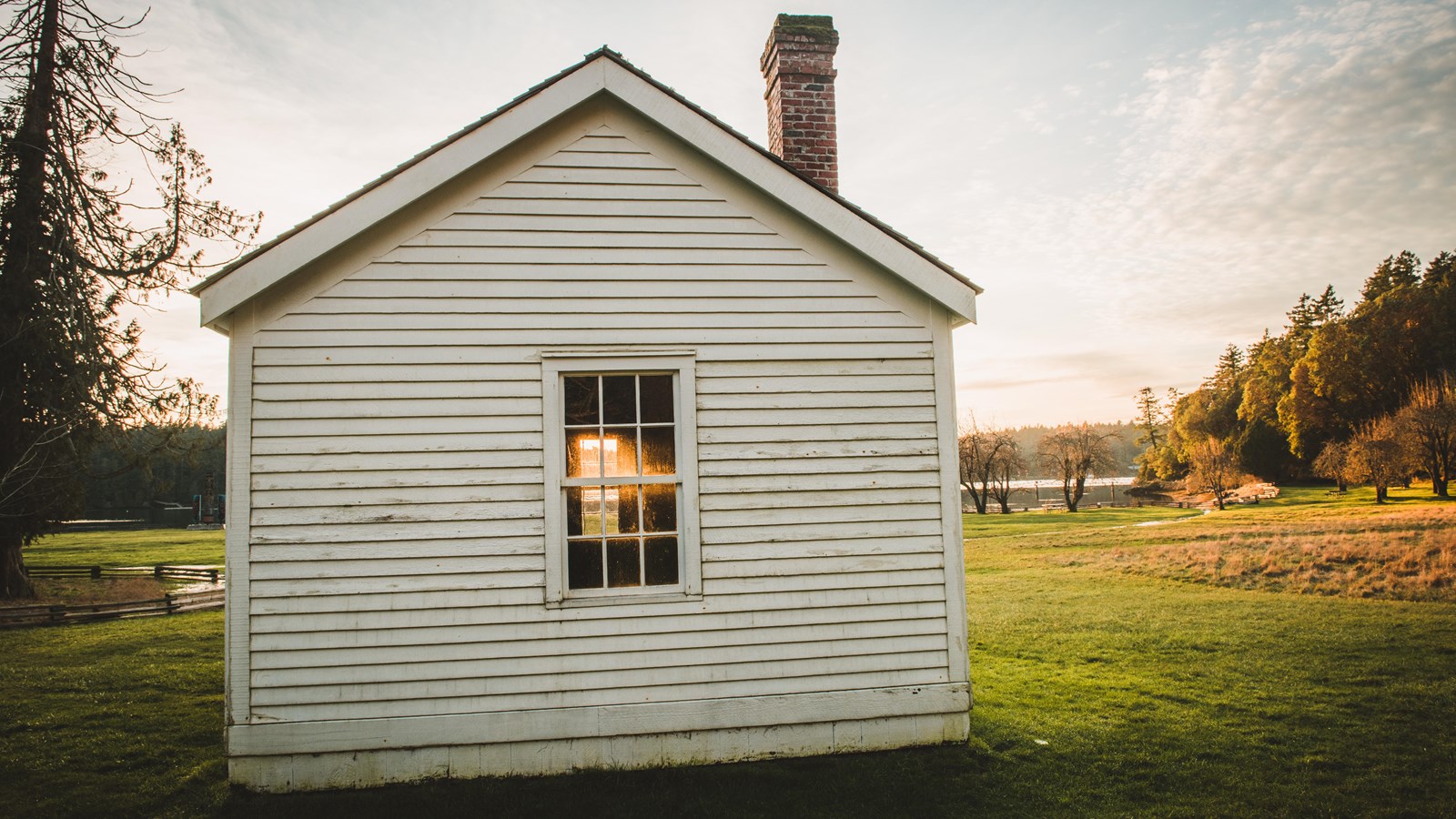Last updated: February 28, 2022
Place
English Camp Hospital

Kim Karu
Quick Facts
Location:
Friday Harbor, WA
Amenities
8 listed
Benches/Seating, Bus/Shuttle Stop, Canoe/Kayak/Small Boat Launch, First Aid Kit Available, Information - Ranger/Staff Member Present, Picnic Table, Toilet - Vault/Composting, Trailhead
Among the first buildings to be constructed at English Camp was this hospital, which originally had beds for four patients, but was enlarged to accommodate six Royal Marines in 1868. The hospital was served by a dedicated assistant surgeon, who was responsible for treating minor maladies, such as broken bones, fevers, and aches. For more major illnesses and injuries, convalescent soldiers were transported to the Royal Naval Hospital at the major naval base in Esquimault on Vancouver Island.
Treatments available at this hospital reflected the medical knowledge of the time, when doctors had yet to understand the concept of germs and utilized medicines now recognized as toxic. For example, patients were often given such toxic substances as pneumonia and strychnine. The most striking problem in the opinion of the assistant surgeons were "the extreme variability of climactic conditions" in the Pacific Northwest which they believed increased "the prevalence of Rheumatism (sic). In this country, heat, cold dampness, and dryness can always be found not only within days but within yards of each other.
"While it is unlikely that the Pacific Northwest’s climate was the direct cause of an epidemic of rheumatism, it was responsible for the majority of deaths at English Camp. Four of the seven men buried at the Royal Marines Cemetery drowned in the Pacific Ocean’s water, a cause of death likely attributable to its extremely cold water, which rapidly causes hypothermia.
If you want to learn more about the Royal Marines and the history of the Pig War, check out the English Camp visitor center, located inside of the English Camp barracks, where you can talk to a ranger, watch our site film, and purchase books and gifts. To get an understanding of the scenery which has enchanted visitors since the days when the Royal Marines lived at English Camp, hike the Bell Point Trail or Young Hill Trail. If you’d like to learn more about what life was like for American soldiers during the joint occupation, stop by our American Camp visitor center.
Treatments available at this hospital reflected the medical knowledge of the time, when doctors had yet to understand the concept of germs and utilized medicines now recognized as toxic. For example, patients were often given such toxic substances as pneumonia and strychnine. The most striking problem in the opinion of the assistant surgeons were "the extreme variability of climactic conditions" in the Pacific Northwest which they believed increased "the prevalence of Rheumatism (sic). In this country, heat, cold dampness, and dryness can always be found not only within days but within yards of each other.
"While it is unlikely that the Pacific Northwest’s climate was the direct cause of an epidemic of rheumatism, it was responsible for the majority of deaths at English Camp. Four of the seven men buried at the Royal Marines Cemetery drowned in the Pacific Ocean’s water, a cause of death likely attributable to its extremely cold water, which rapidly causes hypothermia.
If you want to learn more about the Royal Marines and the history of the Pig War, check out the English Camp visitor center, located inside of the English Camp barracks, where you can talk to a ranger, watch our site film, and purchase books and gifts. To get an understanding of the scenery which has enchanted visitors since the days when the Royal Marines lived at English Camp, hike the Bell Point Trail or Young Hill Trail. If you’d like to learn more about what life was like for American soldiers during the joint occupation, stop by our American Camp visitor center.
